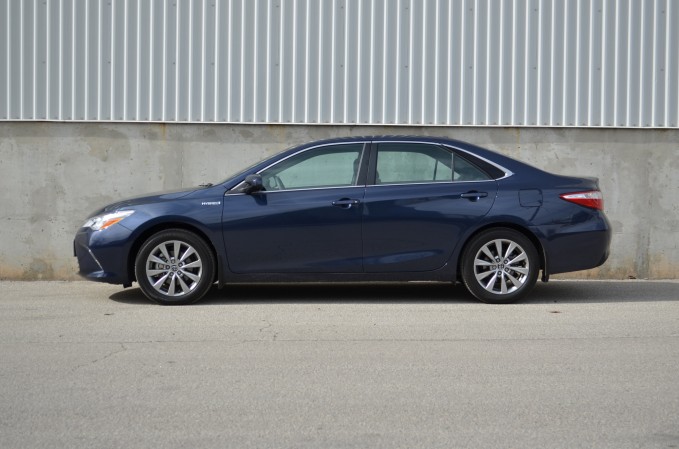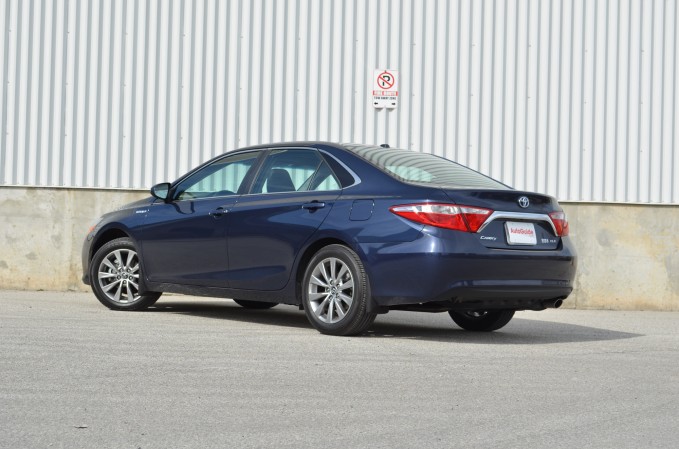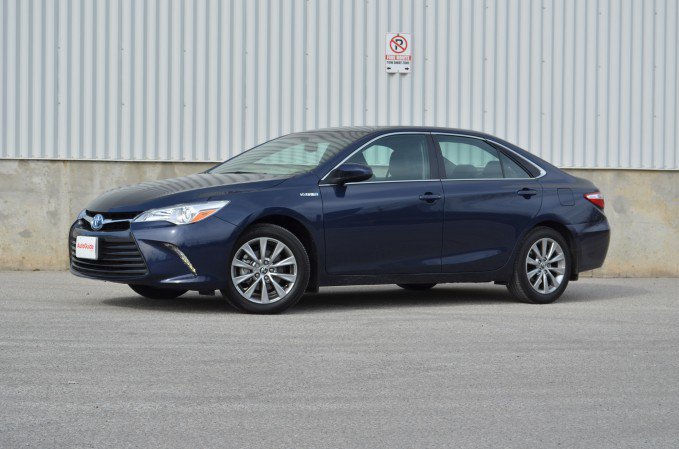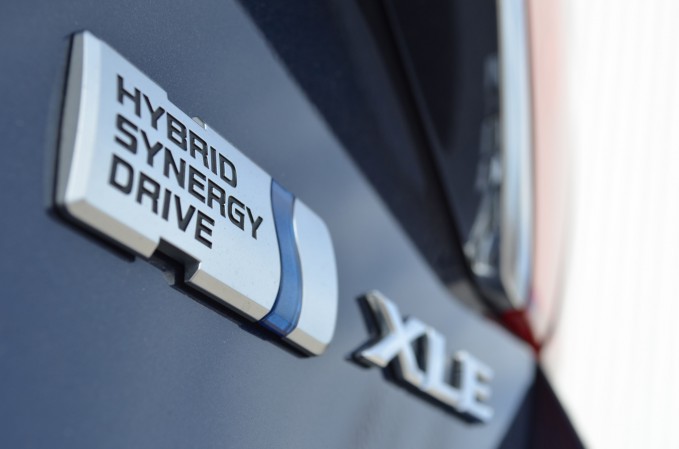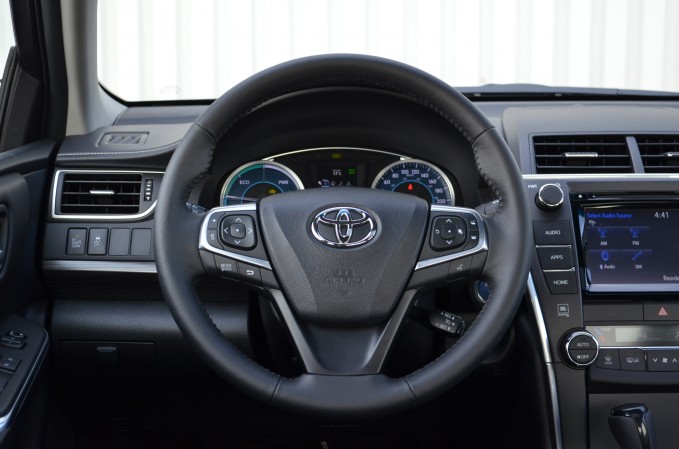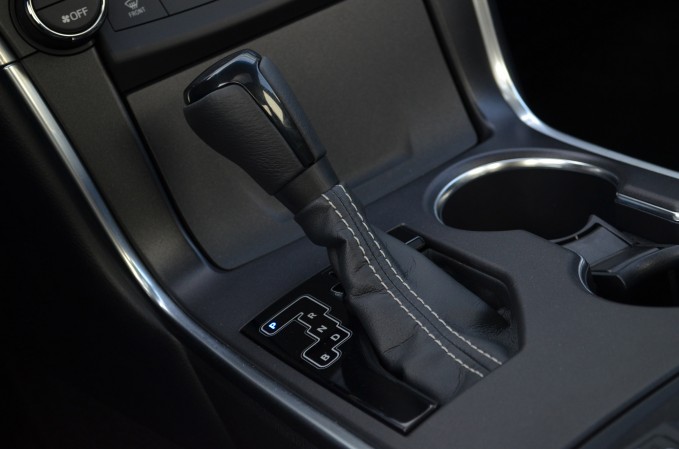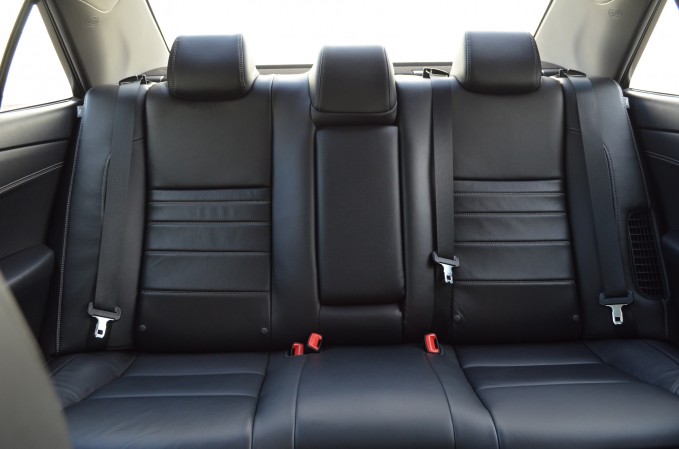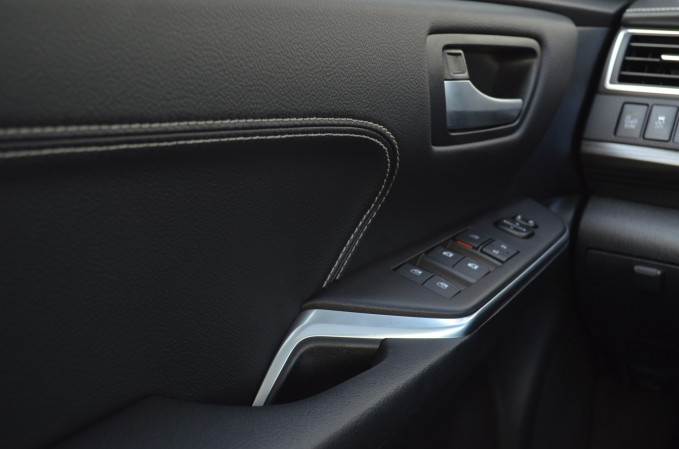Toyota’s Camry is a staple in the American automobile business, but it’s far from thrilling to drive, even less so with the hybrid model.
For the 2015 model year, the Toyota Camry is getting a redesign that makes it more appealing to look at, which is important because the number of midsize hybrid sedans at your disposal is big and only getting bigger.
Imagine for a moment that you have a budget somewhere between $25,000 and $30,000 and a hybrid midsize sedan like the Camry is at the top of your list. It’s certainly one option, but for that price you can also have a Ford Fusion or a Honda Accord. Hyundai offers a hybrid version of the Sonata and Kia echoes that effort with the Optima Hybrid. Soon Chevrolet will introduce a new Malibu hybrid that promises mileage that will make it a robust contender in the segment.
So the point is that it’s good to be shopping for a midsize hybrid sedan right now. With all that in mind, is the Camry Hybrid still an attractive option?
Size Matters
The Camry Hybrid is about 191 inches long and that puts it dead center in a segment where competing products sit within spitting distance of one another in how long, wide and powerful they are. The Camry Hybrid’s engine displaces 2.5 liters, uses an aluminum alloy block and head, and requires 87 octane fuel or higher. In total that system creates 200 HP. In much the same way, the Camry Hybrid has less rear seat legroom than the Accord Hybrid, but more than the Hyundai Sonata Hybrid.
At 13.1 cubic feet, the Camry Hybrid’s trunk is slightly larger than its rivals from Honda and Hyundai even though it sacrifices 17 percent of the cargo space the traditional Camry has to make room for the hybrid powertrain’s extra components.
Sacrificing that cargo space pays dividends because the Camry Hybrid is rated to return an average of 40 MPG, which is the same estimated mileage you should expect during highway driving. In more crowded city traffic, the Camry Hybrid is supposed to cover 38 miles per gallon of gasoline. In our real-world testing, we achieved 43 MPG with a light foot and gentle driving and 33 MPG in heavy stop-and-go traffic. That mileage puts this car behind the Honda Accord Hybrid, which is rated to deliver up to 50 MPG, estimates that we have also found it capable of exceeding. Nevertheless, Toyota introduced new features this year to help its customers save more fuel.
Modus Operandi
For 2015, the Camry Hybrid gains “Eco” and “EV” modes that are meant to make efficient driving easier to achieve. In Eco mode the throttle is
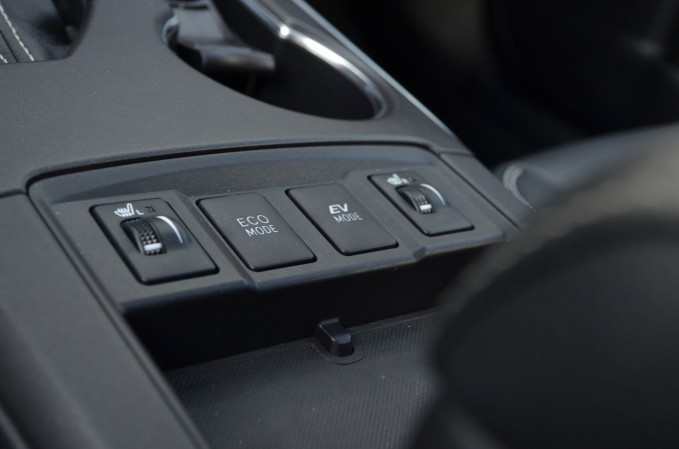
ttle. In EV mode the Camry Hybrid is capable of traveling on electric power at up to 25 MPH for a very limited distance. Gasoline-free grocery runs are out of the question.
Even if EV mode doesn’t transform the Camry Hybrid into a true electric car, it’s more effective than the same-named mode at work in Ford’s Fusion Hybrid where you need an especially gentle touch to avoid activating the gasoline engine.
Driving Impressions:
Total system output for the Camry Hybrid when both the gasoline and electric portions are working is 200 HP, which makes it more powerful than the base four-cylinder model and less powerful than the V6. From zero to 1,500 RPM, the electric motor generates 199 lb-ft of torque that offer plenty of initial acceleration from a dead stop, although peak engine torque (156 lb-ft) doesn’t kick in until 4,500 RPM. Even so, the powertrain offers smooth acceleration and the noise it makes in doing so is well muted from inside the cabin, a trait that is also true of wind noise at highway speeds.
Steering is lightly weighted, but average for the segment and effortless at parking lot speeds. Toyota does a good job of engineering its electric power steering system to prevent it from feeling numb like the Hyundai Sonata and Kia Optima. Even so, the Camry Hybrid doesn’t feel as responsive on corner turn-in as the Ford Fusion.
Seating isn’t uncomfortable, but it could be better. They’re more comfortable than what you would find in either the Hyundai Sonata or Kia Optima, but less form fitting than the front seats in the Honda Accord. Like so much else about the Camry Hybrid, interior comfort is above average if only by a little.
Trim Levels:
There are three trim levels available: LE, SE and XLE. Standard equipment on the base LE model includes projector beam headlights, heated side mirrors, 16-inch steel wheels and a 6.1-inch touch screen, although it doesn’t include navigation without upgrading to the highest trim level and paying a subsequent up-charge. It retails for $27,615 without options like an upgraded stereo.
Camry Hybrid SE models come with 17-inch aluminum wheels, a sportier grille, a spoiler and revisions to the suspension that make it slightly more responsive starting at $28,820.
Finally, the XLE trim adds leather seats, LED daytime running lights and chrome exhaust tips. At that level, you can also add options like a power moonroof and Toyota’s new Entune Mutlimedia system that offers apps through compatible smartphones that can make dinner reservations, buy movie tickets and stream internet radio among other things. The XLE model starts at $30,800, but it costs $35,395.
Interior quality:
The Camry doesn’t feel like a luxury car by any means, but this year’s redesign does a lot to improve the areas where its predecessor lacked finesse. The center stack looks cleaner and its storage cubby near the bottom doesn’t feel cheap the way it does in the previous model.
In general, the cabin takes on a more premium look and feel than the pre-refresh model had. Small touches like a leather boot around the bottom of the gear shift selector, a new steering wheel design and a refreshed gauge cluster all make the Camry Hybrid feel more like a less expensive Lexus and less like a driving appliance.
The Verdict:
With premium trim and revised styling, the Camry Hybrid looks quite a bit better than it did in 2014. By adding fuel saving driving modes a new infotainment system, and a sportier suspension, it isn’t a good hybrid powertrain packaged in a middling midsize sedan body. It’s actually a compelling product.







